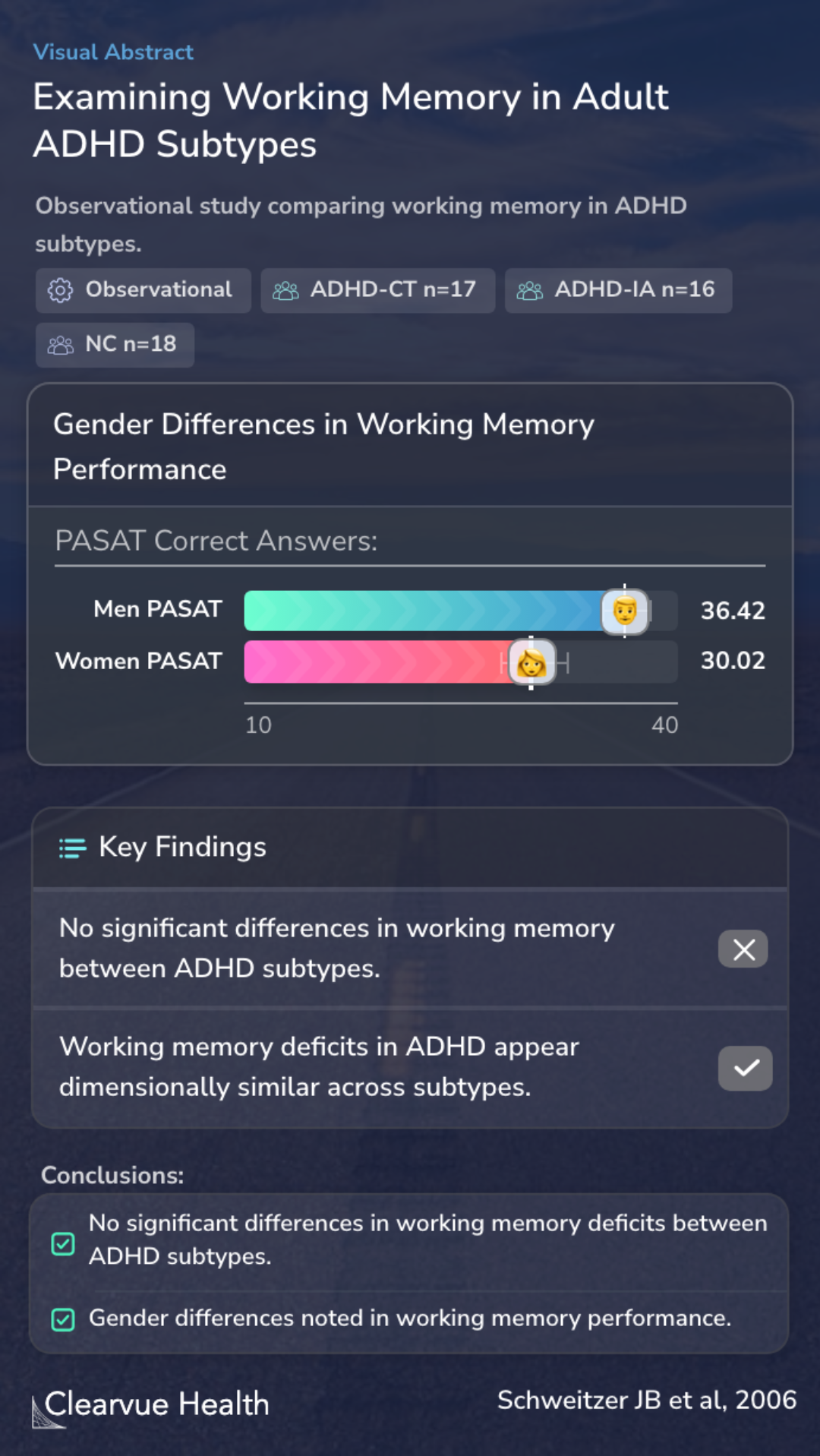Working memory deficits in adults with ADHD: is there evidence for subtype differences?
Examining Working Memory in Adult ADHD Subtypes
Schweitzer JB, Hanford RB, Medoff DR

Objectives
Working memory is crucial for day-to-day functions like learning and social interactions. The study in question delves into the realm of ADHD, particularly in children, focusing on how different subtypes might affect working memory. This is essential because understanding these nuances can help tailor more effective support and interventions for individuals with ADHD.
Working memory performance is important for maintaining functioning in cognitive, academic and social activities. Previous research suggests there are prevalent working memory deficits in children with attention deficit hyperactivity disorder (ADHD). There is now a growing body of litera...
Methods
This study assessed differences in working memory functioning between Normal Control (NC) adults (N = 18); patients with ADHD, Combined (ADHD-CT) Type ADHD (N = 17); and ADHD, Inattentive (ADHD-IA) Type (N = 16) using subtests from the Wechsler Adult Intelligence Scale-III and Wechsler M...
Results
Across all study groups, men generally outperformed women in working memory tasks. This was evidenced by their scores on tests like the PASAT.
Furthermore, when comparing the ADHD subtypes, no significant differences in working memory were observed. This suggests that the deficits in working memory experienced by individuals with ADHD might be more uniformly distributed across different subtypes, rather than being distinct to one subtype or another.
The ADHD groups displayed significant weaknesses in contrast to the NC group on working memory tests requiring rapid processing and active stimulus manipulation. This included the Letter-Number-Sequencing test of the Wechsler scales, PASAT omission errors and the longest sequence of cons...
Conclusions
The study concludes that working memory challenges in ADHD are similar across different types, not specific to one. This means treatments to help improve working memory might work for all ADHD types. The study also suggests looking into how factors like thinking speed and how much information people can handle might affect men and women differently with ADHD.
In general, the data support a dimensional interpretation of working memory deficits experienced by the ADHD-CT and ADHD-IA subtypes, rather than an absolute difference between subtypes. Future studies should test the effects of processing speed and load on subtype performance and how th...
Key Takeaways
Context
In the broader context of ADHD research, this study adds to a growing body of evidence. For instance, a meta-analysis by Alderson et al. in 2013 found moderate differences in working memory between adults with and without ADHD, underlining the idea that working memory issues are a persistent aspect of ADHD into adulthood. This aligns with the current study's findings, further solidifying the understanding that working memory deficits are a core feature of adult ADHD.
Moreover, a study by Klingberg et al. in 2005 showed that working memory could be improved in children with ADHD through specific training exercises. This suggests that despite the challenges posed by ADHD, there are ways to enhance working memory capabilities. The current study's findings, indicating a more generalized pattern of working memory deficits across ADHD subtypes, could mean that similar training and intervention strategies might be beneficial for a broader range of individuals with ADHD.